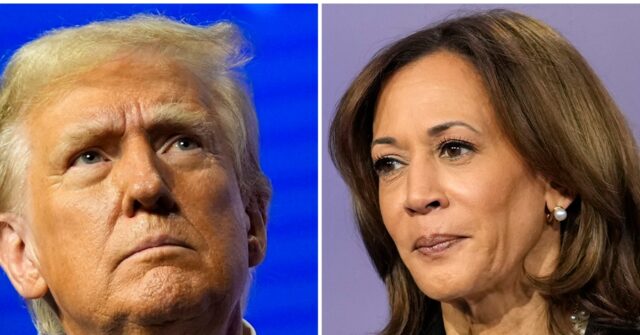Recent polling data highlights a competitive political landscape in Michigan, particularly regarding the presidential race. The survey results indicate a plurality of support for President Joe Biden’s re-election bid. Current polling reveals that Harris has a modest lead with 48.2 percent support among likely voters, while former President Donald Trump trails closely behind at 47.1 percent. This close contest is also marked by the presence of third-party candidates, including Jill Stein from the Green Party and Robert F. Kennedy Jr., who, despite exiting the race, remains on the ballot and has captured 1.4 percent of the vote. Other minor candidates, such as independent Cornel West and Libertarian Chase Oliver, account for lower percentages, with West at 1 percent and Oliver at a mere 0.2 percent. Additionally, 1.4 percent of respondents remain undecided or did not provide a preference.
In a parallel political race, the Senate contest between Democratic Representative Elissa Slotkin and Republican candidate Mike Rogers is similarly tight. Slotkin leads Rogers with 47.2 percent to Rogers’s 45.5 percent, while 5 percent of voters remain undecided, indicating that this segment of the electorate could significantly influence the outcome. The competitiveness of both races underscores the potential volatility of voter preferences and reflects a broader trend in which candidates are working to capture the support of undecided voters, who may ultimately determine the victor in these contests.
The recent polling aligns with findings from other surveys, including a notable Emerson College Polling/RealClearWorld survey that also indicates a tight race for the presidency, showing Trump leading Harris by a narrow margin of 49 percent to 48 percent in Michigan. This changing dynamic is further emphasized by results from a Patriot Polling survey, which similarly showcases Trump’s slight lead and suggests an influx of independent voters gravitating toward him. As the election date approaches, these shifts in voter sentiment could be critical for campaign strategies and outreach efforts by both major parties.
Moreover, the aggregated data from RealClearPolitics underscores the precarious position of both major-party candidates. While the average of recent polls indicates Harris holding a slight edge at 0.5 percent, the context of Trump’s previous victory in Michigan during the 2016 election, where he flipped the state for the first time in over two decades, adds an additional layer of complexity to the current race dynamics. The historical voting trends in Michigan, including its pivotal role in the Electoral College, prompt candidates to prioritize engagement with Michigan voters to secure vital electoral votes.
The close nature of both the presidential and Senate races in Michigan is reflective of higher voter mobilization efforts and engagement strategies from both major parties. With one in four voters reporting plans to vote early, the campaigns are likely focusing on securing early votes as a means of building momentum and fortifying their positioning. Additionally, candidates are expected to ramp up their outreach efforts to connect with undecided voters and engage them on key issues that resonate in the Great Lakes State, such as the economy, healthcare, and public safety.
In summary, the evolving political landscape in Michigan presents a compelling narrative of competitiveness and uncertainty. As both major-party candidates strive to solidify their bases while appealing to undecided voters, the influence of third-party candidates adds another layer of complexity to the electoral calculus. With the Senate race also highlighting close margins, the outcomes in both contests could hinge on effective voter engagement and strategic campaigning as Michigan moves towards the election, emphasizing the state’s critical importance in the national political arena.

